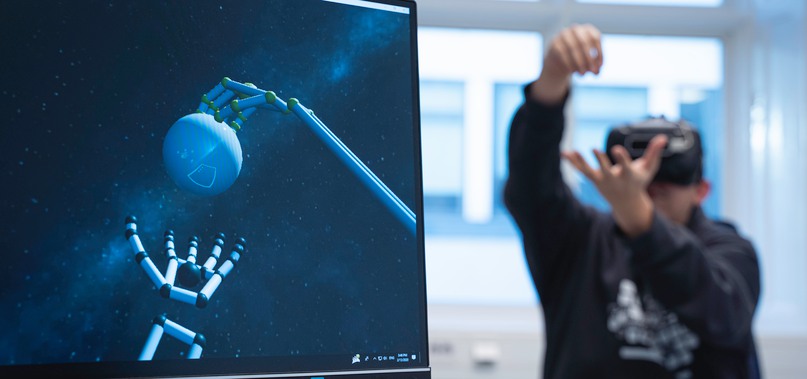Virtual applications in which humans and machines come together

The research in visual and interactive computer science is often associated with gaming technology, however, that is only one part of all the possibilities that exist. For example, it can be used for surgeons to practise an intervention, for training for disaster responses or to use everyday objects in the 1500s.
The research focuses on how technology is used by humans to interact effectively and creatively with computers.
“The expertise at BTH in the interaction between humans and technology enriches everything we do, and the research can be divided into three areas; computer graphics and visualisation, digital game development and methods and technology for human-computer interaction”, says Veronica Sundstedt, associate professor and researcher in computer science.
Technology that creates presence
In the VR lab at BTH, research experiments are carried out with participants who, among other things, are able to test and evaluate visual perception and quality of digital virtual applications. Sometimes for games but also in entirely different areas of application.
“Visual and interactive technology creates a feeling of presence in digital experiences, for example, in education, entertainment and communication. It is like being there, and sometimes more than that”, says professor Hans-Jürgen Zepernick.
A collaboration is underway with Blekinge Museum in which the VR technology enables us to see museum objects virtually in an environment typical of their era.
Let your eyes steer
Using handheld controls to navigate in a digital world is just the beginning, your body will become the tool instead, says Diego Navarro, doctoral student in computer science.
“We use virtual reality tools to understand, entertain and educate. Researchers have made advances particularly when it comes to knowledge and technology for eye tracking, that is, using the human gaze as an information source and tool”, he says.
“It not only involves an understanding of how a user generally moves their gaze to be able to improve the application, it is also about calibrating technology for individual eye tracking and improving the experience”, says Veronica Sundstedt.
“Eye tracking in 3D is more difficult but very interesting. It is one of the puzzle pieces to create new interactions in virtual environments. In the future, digital applications will be adapted to humans by analysing what and how they see”, says Diego Navarro.
Great potential in many areas
There is great potential in better understanding the link between technology and what happens physically in the body.
“Not just sight but also other senses and bodily functions may become part of the analysis, such as heart frequency or impulses from the brain”, says Diego Navarro.
The combination of different sensors and the ability to use this data in applications within the most diverse areas is an interesting part of the research, which also opens doors for many collaboration opportunities.
“We have a suitable environment and expertise to conduct useful and applicable experiments, and we are very interested in increasing our collaborations, for example, in healthcare and tourism”, says Veronica Sundstedt.
23 June 2020